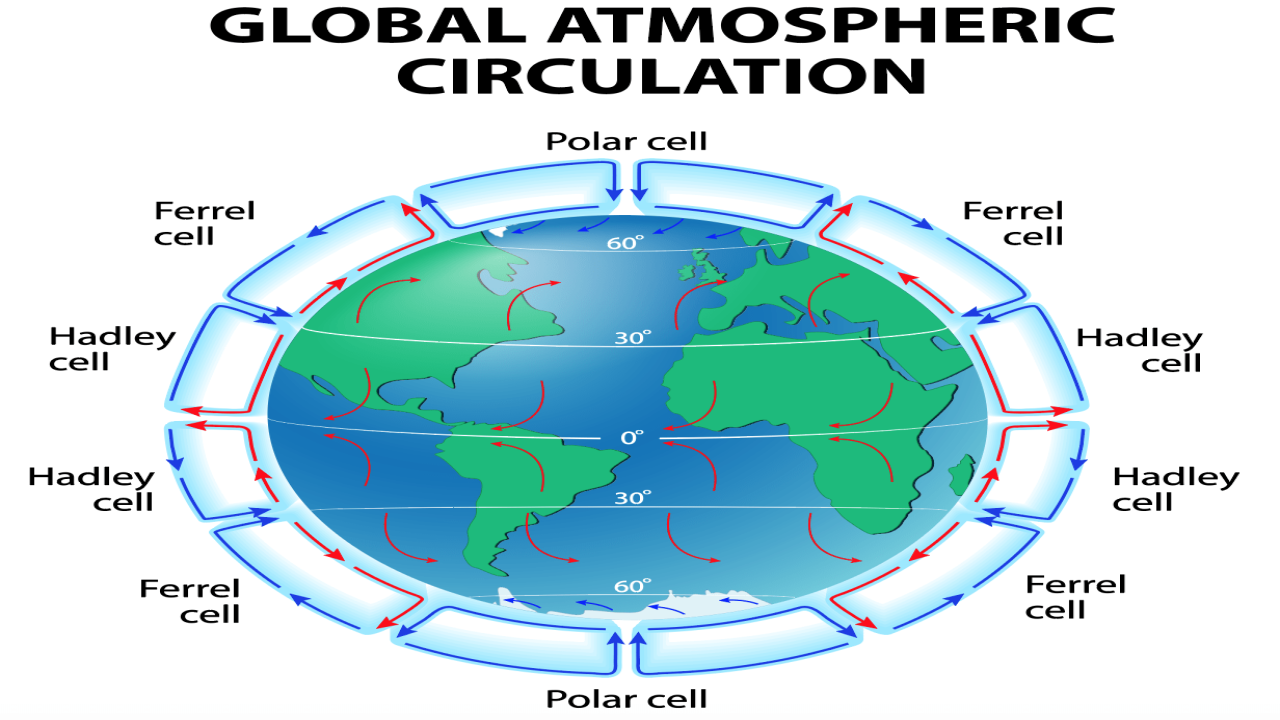Atmospheric circulation
Atmospheric circulation refers to the movement of air in the Earth’s atmosphere, driven by differences in temperature and pressure. This circulation plays a critical role in regulating weather patterns and climate conditions across the planet
What is Atmospheric Circulation?
Atmospheric circulation refers to the movement of air in the Earth’s atmosphere, which is driven by differences in temperature and pressure. This circulation is responsible for the distribution of heat energy across the planet and plays a critical role in regulating weather patterns and climate conditions.
The Earth’s atmosphere is divided into several distinct layers, including the troposphere, stratosphere, mesosphere, and thermosphere. The majority of atmospheric circulation occurs in the troposphere, which is the lowest layer of the atmosphere and where weather occurs.
The Three Cells of Atmospheric Circulation
Atmospheric circulation is often described in terms of three cells, known as the Hadley cell, Ferrel cell, and Polar cell. These cells are named after the scientists who first described them and are characterized by different patterns of air movement.
- The Hadley Cell: The Hadley cell is located near the equator and is characterized by rising warm air, which creates a region of low pressure. This warm air cools as it rises, creating clouds and heavy rainfall in the region. The cool, dry air that descends from the top of the cell creates stable atmospheric conditions and suppresses cloud formation and rainfall in the subtropical regions.
- The Ferrel Cell: The Ferrel cell is located between the Hadley and Polar cells and is characterized by a region of rising air at around 60 degrees latitude in both hemispheres. This rising air creates an area of low pressure, which results in unstable atmospheric conditions and the potential for storms and severe weather.
- The Polar Cell: The Polar cell is located near the Earth’s poles and is characterized by a region of sinking cold air, which creates stable atmospheric conditions and the potential for the formation of polar ice caps.
Factors that Influence Atmospheric Circulation
Atmospheric circulation is influenced by a range of factors, including:
- Solar Radiation: The amount of solar radiation that the Earth receives varies with latitude, creating differences in temperature and pressure that drive atmospheric circulation.
- Earth’s Rotation: The Earth’s rotation creates a Coriolis effect, which causes air to deflect to the right in the northern hemisphere and to the left in the southern hemisphere. This effect influences the direction of atmospheric circulation.
- Land and Ocean Surfaces: Land and ocean surfaces have different albedos, or reflectivities, which affect the amount of solar radiation that is absorbed and reflected. This can influence the distribution of heat energy and the movement of air masses.
- Topography: Mountain ranges and other topographic features can influence atmospheric circulation by blocking the movement of air masses and creating areas of high and low pressure.
The Importance of Atmospheric Circulation
Atmospheric circulation plays a critical role in regulating weather patterns and climate conditions across the planet. By distributing heat energy and moisture across the Earth’s surface, atmospheric circulation influences the formation of weather patterns, such as hurricanes, tornadoes, and thunderstorms. It also plays a critical role in the global climate system, influencing the distribution of heat energy and the formation of climate patterns, such as El Niño and La Niña.


